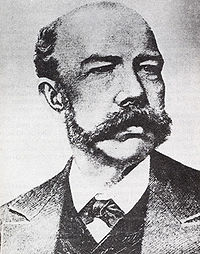7.3 Leading exponent of Cuban music in the first half of the 19th century (1800-1868). Manuel Saumell.

Manuel Saumell is considered the precursor of Cuban nationalism, a pianist, instrumentalist, and notable composer. He was born in Havana in 1817 and died in 1870. He came from humble origins. He studied music self-taught, demonstrating his great talent and vocation from a very young age, as by the age of fifteen he was already immersed in musical composition. As an adult, he studied piano with Juan Federico Edelmann and with Mauricio Pyke in harmony, counterpoint, fugue, and instrumentation.
He played piano in several Havana churches, organized musical gatherings, composed instruments, made musical arrangements, and offered classes to the younger generation of Cuban musicians of his time.
Saumell led a very hectic life, which limited his composing skills. Due to his socioeconomic status, he experienced many hardships, making him a hard worker, very sensitive, and rigorous with himself in achieving his goals. In 1939, when he was 22 years old, he set out to write an opera that reflected Cuban themes, set on the island and incorporating characteristic elements of Cuban everyday life. Unprecedented in Latin America, this project was thwarted for sentimental reasons.
In addition to composing, he performed as a musician on various occasions and gave numerous concerts. Saumell was an intense and dynamic man who was extremely active throughout his life.
He was a member of several cultural societies, which demonstrates his interest in acquiring all those knowledge or trends, which he would later reflect in his works and in some specialized reviews he wrote in periodical publications of the time under the pseudonym El Timbalero.
His true significance as a composer came with his contradanzas for piano, featuring two contrasting parts and duple time signatures, which featured for the first time rhythmic elements from the popular Cuban music heard in the 19th century, including claves, guajiras, habaneras, and criollas. His contradanzas were characterized by a predominance of the central register, great melodic fluidity, and a simple duple structure. It was a synthesis of cultures. A music that was born Cuban, equally indebted to European and African patterns. During his lifetime, he composed approximately 50 contradanzas.
Her works feature evocative titles such as La Tedezco, Los ojos de Pepa, La Quejosita, Los chismes de Guanabacoa, and others. They are examples of solid and elaborate creation, where the themes or melodic motifs are characteristic of Cuban music, transcending the popular framework and becoming purely concert-like creations.
Alejo Carpentier, in his book La Música en Cuba, pointed out that thanks to Saumell’s work, the constituent elements of a Cuban identity that were dispersed in the environment and did not leave the dance halls were established and refined to integrate a musical event full of implications.
Manuel Saumell is considered the Father of Contradanza and a leading figure in the Cuban national musical style; prestigious Cuban cultural institutions, including music schools, bear his name today.








